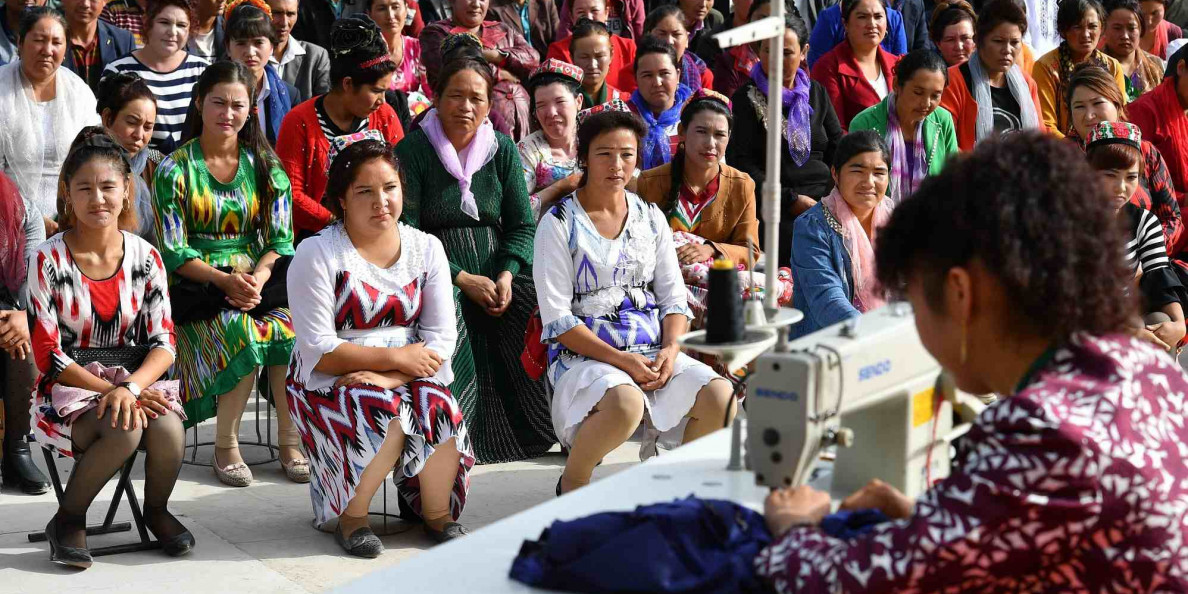NEW YORK, May 7 (Reuters) - Traces of banned Chinese cotton were found in 19% of a sample of merchandise selling at U.S. and global retailers in the past year, a study showed, highlighting the challenges of complying with the U.S. law aimed at blocking imports of cotton linked to forced labor in China.
In the study released on Tuesday, researchers from natural resource analytics, isotope testing firm Stratum Reservoir and DNA lab Applied DNA Sciences (APDN.O), opens new tab analyzed garment samples, cotton swabs and shoes from big box retailers and e-commerce platforms. The firms declined to name the retailers whose merchandise they tested.
The scientists used isotopic testing, which can link cotton to specific geographic areas by analyzing the concentration of stable elements like carbon and hydrogen present in both the crop and the environment in which it has been grown, experts say. They tested the merchandise for traces of cotton from Xinjiang, the far western region of China.
The U.S. enacted a law in 2021 to safeguard its market from products potentially tainted by human rights abuses in Xinjiang, where the U.S. government says China is committing genocide against Uyghur Muslims.
China denies abuses in Xinjiang, a major cotton producer that also supplies much of the world's materials for solar panels.
WHY IT'S IMPORTANT
For years, lawmakers and trade organizations have been trying to keep product made with forced labor out of the U.S. supply chain. But the study shows that the new law is not necessarily effective.
A federal report published in 2022 estimated that cotton from Xinjiang accounted for roughly 87% of China’s production and 23% of the global supply in 2020 and 2021. Countries including Vietnam, Cambodia and Bangladesh - some of the world’s largest producers of cotton clothing and consumer goods - still import large quantities of finished fabric from China. It then often makes its way to the U.S. in the form of apparel made by suppliers in those countries, according to the report.
Ad Break Coming Up NEXT That’s because it’s not made from plastic - but wheat straw and has seeds nestled inside. StayNext00:0601:50OffEnglish 180p288p360p480p540p576p720pHD1080pHDAuto (180p) About ConnatixV477758 About ConnatixV477758 1/100:00Plantable cutlery brings sustainable push to the tableSkip Ad Continue watchingPlantable cutlery brings sustainable push to the tableafter the adVisit Advertiser websiteGO TO PAGE
BY THE NUMBERS
Of the 822 products tested, 19% had traces of Xinjiang cotton, the researchers said. The study tested a sample of items from February 2023 through March 2024.
Of the items that tested positive for Xinjiang cotton, 57% featured labels that claimed the origin of the merchandise was U.S.-only, the researchers said.
Of the items that tested positive for Xinjiang cotton, two- thirds showed that the cotton had been blended with cotton and materials from regions outside of Xinjiang, they said.
One of the two firms, Applied DNA Sciences, declined to comment on which brands and retailers it analyzed. It said that it purchased goods within the U.S. and from e-commerce brands that ship to the country.
Reporting by Arriana McLymore in New York Editing by Marguerita Choy
Πηγή: Reuters

